Authority Soccer (authoritysoccer.com) is a participant in the Amazon Services LLC Associates Program, an affiliate advertising program designed to provide a means for sites to earn advertising fees by advertising and linking to Amazon.com. This site also participates in other affiliate programs and is compensated for referring traffic and business to them.
The topic of which soccer skills are essential and which drills should the players dedicate their time to is a source of never-ending debate in locker rooms, as well as in soccer magazine writers’ rooms.
Have you ever considered how much skill and practice it took Cristiano Ronaldo to be where he’s at now? Or how many of those skills were a talent he was born with and how many he need to work insanely hard on?
Whether your answer is positive or negative, we hope the question got you interested.
In this article, we will share the 40 soccer skills and drills that both players and coaches can, and should, utilize if they want to improve their team’s play. Let’s start:
20 Soccer Skills
1. Ball Control
Remaining in control of the ball at all times is a skill that soccer players take years to master.
This is why it’s commonly one of the first skills we start learning when we first pick up soccer. Whether it’s driving the ball forwards, receiving it, or keeping it from an opponent, there are numerous ways you can develop this skill.
For more on that, read on to discover some cone drills that improve ball control. If you want to see some impressive ball control, see this video.
2. Body Control
Learning how to use your own body to your advantage is a thing that not many soccer players grasp easily.
The way you control your body and adjust it to specific situations can significantly improve your chances of winning.
Body control helps us dribble, defend, shoot, and score in tough situations. Take a look at the video for more info on this commonly neglected aspect of soccer play.
3. 1v1 Dribbling
Being able to handle defenders in a 1v1 situation is an essential skill for every soccer player. Speed and control are the key elements for pulling off a successful dribble.
Knowing when to dribble and when to pass is a thing that comes with experience and practice. So, combining awareness, speed, and ball control is the key. Here’s a video that explains this essential soccer skill in depth.
4. Passing
Not even the best player on the planet can play against 11 other people without some help. Passing is a necessary part of soccer and it is how we keep the ball in the opponent’s half of the field.
Whether it’s short or long passes, placing the ball right where you want it is not an easy task.
You can learn how to improve your passing accuracy by clicking on the link and watching a short video.
5. Wall Passing

Wall passing is an advanced form of passing and a skill that is commonly used in 2-1 situations. Using this skill, players can easily get around an opponent.
The skill is derived from indoor soccer where a player can pass themselves the ball using the wall or a barrier.
In regular soccer, the wall is replaced by a teammate. Check out the video to learn more about wall passing
6. Crossing
The crossing is a skill that is used when the attacking player is moving along the flank with a ball and decides to send it in to the penalty box, most commonly for a header.
While for most players it comes naturally, this skill needs tons of practice in order for the player to be able to cross the ball without taking forever to set up the pass.
Learn more about crossing by watching this video.
7. Shielding
Passing is not always an option when you’re on the attacking end of the game. In some cases, players can get stuck in a situation when they just can’t get the ball to an open teammate.
This is when shielding comes in. Shielding is a soccer skill that, once developed, allows the player to protect and keep the ball by using their body as a barrier between the ball and an opposing player.
Shielding requires strength, balance, and body control. It is a skill that mixes most of the previously mentioned skills into one. Do you want to learn more about shielding? Visit the video linked.
8. Shooting
Shooting and scoring are what all of the preparation and skill development leads to. This is an essential skill that even defenders need to learn and it can’t be summarized in a single paragraph.
Instep shooting, inside foot use, outside of the foot use, half-volley, and volley are just some of the things that every soccer player needs to be confident with.
Here’s a short video on how you can improve your shooting skill in no time.
9. Heading
While outsiders think that soccer is a game where almost two dozen people run around thoughtlessly after a ball, it’s actually a game that requires using your head is a thing we do in soccer in more cases than one.
For now, let’s focus on the actual use of the head; hitting the ball with it. High balls that are coming from the side of the penalty box can’t be caught in another way.
This soccer skill requires the players to know how and where to position themselves, while also requiring a high level of athleticism. Remember how high Ronaldo jumps? You can learn that too from this video.
10. Trapping the Ball
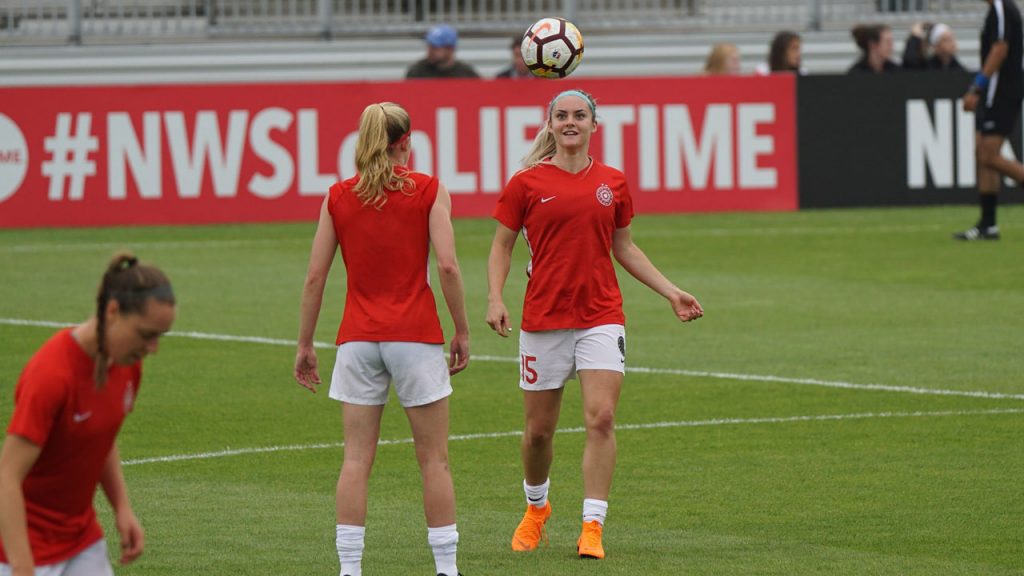
Receiving a pass is another skill that all players need to master before stepping onto a field for a game. Trapping the ball is a skill that involves stopping and controlling the ball with a single flick of the foot.
This move can mean the difference between a player looking like a pro or like a stone wall that the ball just bounces off of. You can see the basic principles of this skill in the following video.
11. Curving the Ball
Here’s another essential skill for soccer players, especially those playing on the attacking end. Curving the ball can trick the opposing players and goalkeepers, making it easier to place the ball in the net.
By perfecting this skill, soccer players can surprise any defense with an unpredictable curveball. Be advised, however; hundreds of hours of practice are necessary to perfect this skill.
Watch the video in the link to find out more and learn how to perform this maneuver.
12. Precision
Shooting isn’t all about hitting the ball as hard as you can. The nuances needed to get your shooting skill to a level that you can call precise can take more than a decade of continuous and dedicated practice to develop.
Being able to place the ball in the exact corner of the goal that you want it to go is, undeniably, a cool skill to have at your disposal.
You can learn more about shooting precision and power by visiting the linked video.
13. Marking
Marking is one of the first defensive skills we learn as soccer players. This soccer skill is actually a defensive strategy whose main goal is to prevent the opponents from taking control of the ball.
Learn more about the marking skill by visiting the video linked in this sentence.
14. Pressing
Allowing the opponent to move and attack freely is never a good choice in soccer. This is why there are numerous ways to play defense.
One of them is pressing, and it is an elemental skill for all soccer players.
Pressing, as the name suggests, revolves around putting pressure on the opposing team’s player with the ball, giving them no time to create plays, and increasing your own chances of turning a defensive situation into an attacking one.
If you’re into soccer strategies, this video on pressing will be a real treat.
15. Cupping
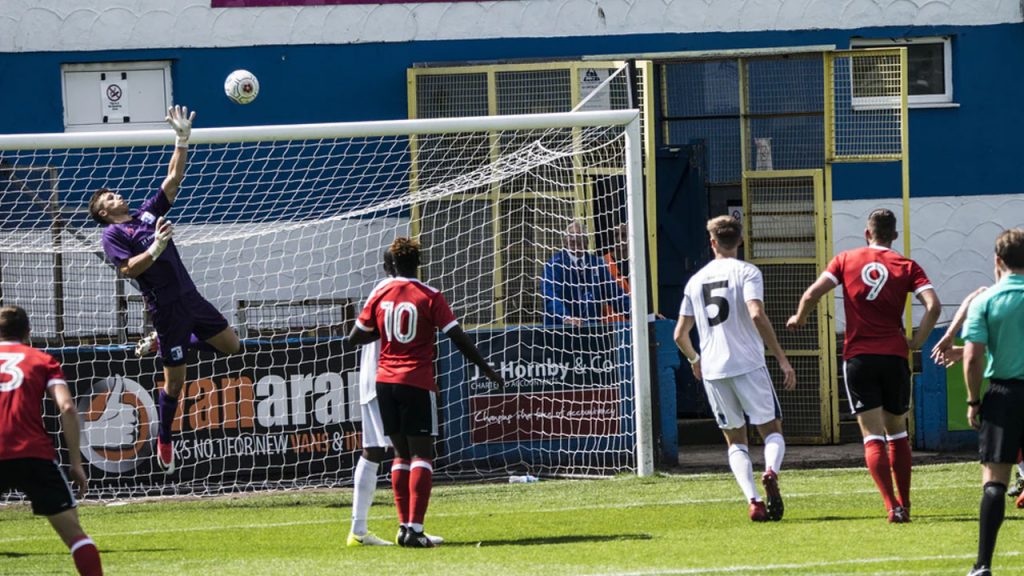
We haven’t forgotten about goalkeepers and their role, so here’s the first essential skill that these players need to work on: Cupping is the safest way to get a hold of, and hold on, to the ball.
A cup between the underarms and the chest is created, using the goalkeeper’s hands as a cover.
The trick with this skill is that, in addition to learning how to actually catch the ball, goalkeepers need to learn how to position their arms in order to retain control of the ball.
You can learn more about this goalkeeping skill by watching the video in the link.
16. Narrowing the Angle
Goalkeepers also need to know where to position themselves. Covering the right angle is half of their job and the main element that separates amateurs from professionals.
Whoever thinks that goalkeepers spend the entire game just standing at the goal line should do some research on angling, as it’s become a science in its own right and the thing that separates good goalkeepers from the average ones.
This skill is essential in all situations, especially in those involving counterattacks from the opposing team. Learn more about narrowing and covering the right angle from this video.
17. Speed
Even though it might seem like a skill that is only determined by God-given talent, speed is something that all players should work on.
Granted, it does take a lot of practice hours to notice even the slightest improvements in speed, but every millisecond can count in a game. Watch this video on how to improve your speed.
18. Spatial Awareness
All the talent and training in the world can’t help you if you fail to recognize your surroundings in a game of soccer.
Seeing clearly what’s going on in every part of the field and recognizing what movement can lead to a chance for your team is one of the key things coaches look for in a player.
Knowing where to position yourself is another aspect of soccer that falls into this category. Both coaches and players should check out this video and learn more about spatial awareness.
19. Risk Assessment
Here’s another thing that either comes naturally or takes a ton of playtime to learn; risk assessment is a soccer skill that enables players to read the situation in an instance and determine how to react without hesitation.
Whether it’s a risky tackle, some other aggressive action, or a more passive one such as kicking the ball out of the field of play on purpose, recognizing potentially goal-jeopardizing situations is a must-have skill among professional soccer players, as well as more serious amateurs.
Here’s a video on how you can improve your confidence in soccer and develop risk assessment skills with it.
20. Tactical Knowledge
Tactical knowledge is not a skill many soccer players like, but it is a necessary one. Being familiar with the structure of the game is the key to being good at it.
Knowing the theoretics behind the game enables the player to predict potential threats and adjust their play to deal with them effectively.
Gaining this skill doesn’t come from books, but rather from using advanced strategies in practice and in games. Here’s a video that showcases how tactical knowledge is developed among young soccer players.
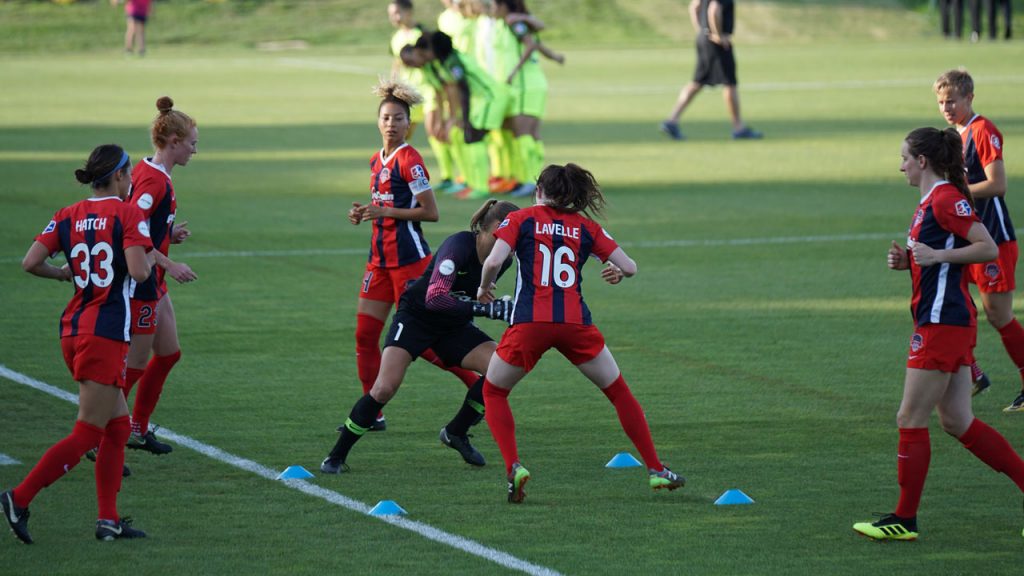
20 Soccer Drills
1. Basic Cone Drill
Dribbling between cones is what most of us started with when we first picked up soccer. This drill focuses on improving ball control and builds confidence in new players.
All you need is a ball and a few cones to set this drill up: When it comes to beginners, the cones should be set in a straight line, with the player moving the ball between them as fast as they can.
You can see the basic and more advanced cone drills in this video.
2. Single with a Cone Drill
If you’re practicing on your own, this is an excellent drill to run on the regular, regardless of your skill level. It only requires one cone (or any object used as a marker) and a ball.
Here’s how it works: Standing behind the cone, move the ball between your feet and forward, forming the U form with the ball around the cone.
Do the drill rhythmically, and increase the speed of movement and duration of the drill with each practice. Click on the link to see this drill.
3. Advanced Cone Drill
With time, players will build confidence in moving between the cones. That’s when we step things up with this new drill: The cones should be set up in a straight line, around 2ft apart.
The player then moves the ball between the cones with no more than three small touches used around each cone.
Going on the right, the player uses the outside of their foot, while going left they use the inside. See the video for more.
4. Round Cone Drill
Once they’ve got the handle on the straight line, players should move on to the round cone drill. In this drill, the cones are set up in a circle, preparing players for more game-like situations where they have to shift their movement quickly.
Players should zig-zag between the cones clockwise only using their right foot and small touches, going faster as they progress.
Once they’ve made a full circle, they turn and shift the foot used as well as the direction they’re moving in. Here’s the video that explains the drill in detail.
5. Cut-Back Drill
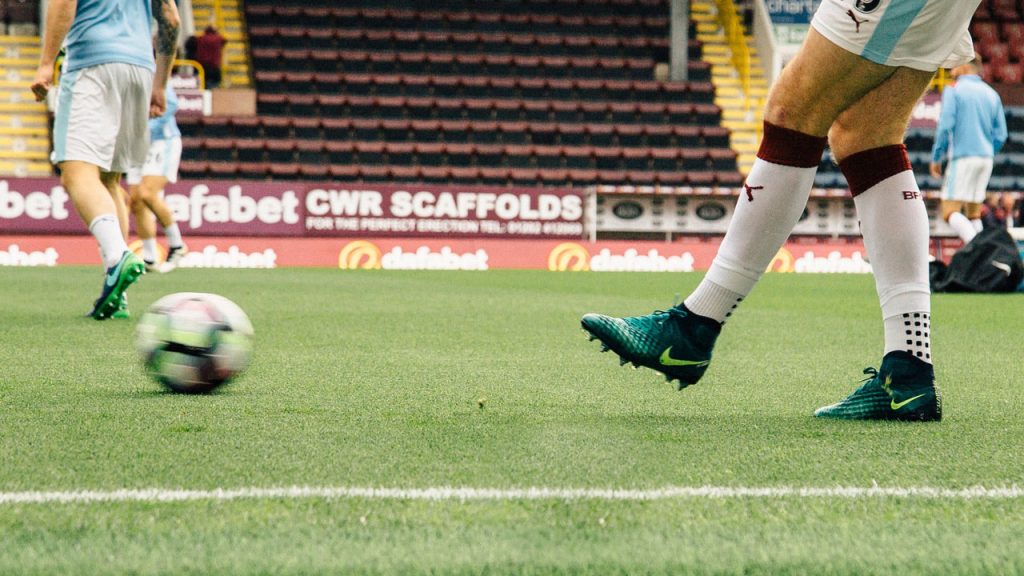
Here’s another drill that involves cones; Dribbling in tight spaces and at sharp angles is something that most amateur soccer players struggle with, and this drill can help with that:
The cones should be placed in a zig-zag formation, and the aim of the drill is to move the ball as quickly as possible between them. The variations in this drill are virtually endless, so see the video for more drill options.
6. Pass-Shoot Drill
This is a fun one for beginners: One player stands on the line next to the goal and they pass the ball to the second player who is in the penalty box.
The second player then has two touches at their disposal, the first one to set the ball up, and the second to shoot towards the ball.
After a few of these, switch things up by adding an additional pass between the two players. Here’s a visual representation of this drill.
7. One-Touch Shooting Drill
Building on the previous drill is this one; instead of having two touches at their disposal, players now just have one. The drill can be played out in numerous ways.
The passing player can deliver the ball from wherever they want and as high or as low as they please. Our recommendation is to start low and slow, then progress to faster and higher passes.
You can click on the link to see the video description of this drill.
8. Chelsea FC Shooting Drill
Another drill focused on developing shooting skills in soccer beginners involves three goals. Two smaller goals should be placed on each side, with the regulation goal in the middle.
All three goals should have goalkeepers, except those at the two smaller goals can’t use their hands. Players then take turns trying to score on either of the smaller goals.
Whoever scores then gets past the ball and attempt to score on the big goal. Here’s the video of this drill.
9. Move and Shoot Drill
Here’s one for advanced players; three players rotate between passing and shooting the ball towards the goal. The passes can be low, high, or in between.
As simple as it seems, this drill develops coordination, speed, ball control, as well as shooting. Also, it’s insanely fun once you get the hang of it. You can see the video that explains the drill by clicking on the link.
10. Basic Header Drill
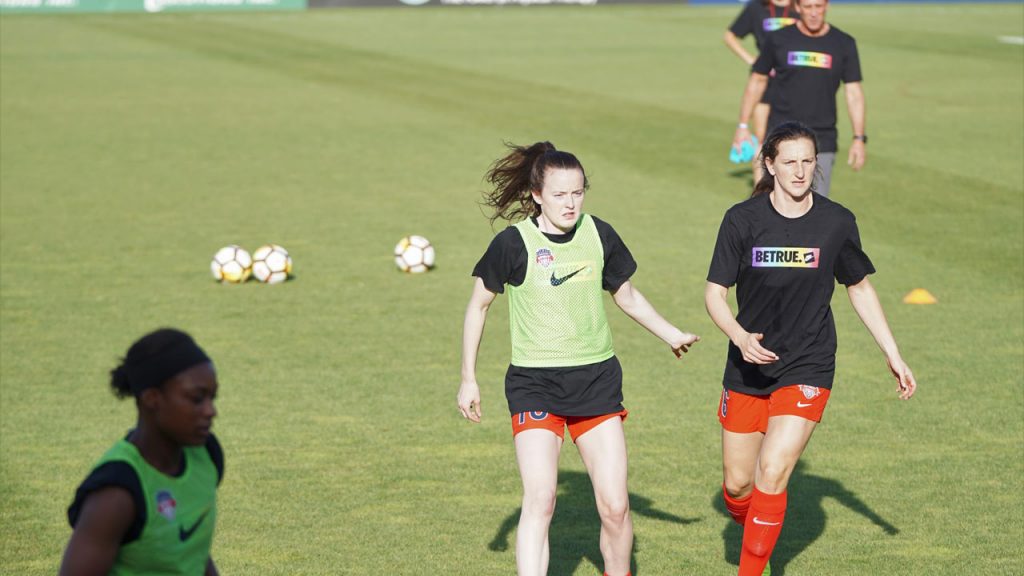
Scoring with your feet is not the only option in soccer. Headers are there too and players should practice them if they want to be ready for the game.
The most basic header drill involves just one thing – a soccer ball. Juggling the ball on your head 30 times is where it all begins. Later, each juggle can involve you bouncing the ball off the wall first. See the video for details and more info.
11. Short Pass Drill
Short passes are another key element of soccer, especially the variants played indoors. This drill involves two soccer balls and three players who need to line up in a straight line.
The middle player receives the ball from either of the players, delivers it back with just a single touch, and turns around to repeat the same with the second player. Here’s a video description of this drill.
12. Cone Pass Drill
For this drill, two rows of cones should be set up parallel to each other, with around 5ft of space between them.
Two players then start on the outside of each side of the cones, passing the ball between the cones. This is a great team exercise that focuses on building speed, mobility, and passing skills.
You can visit the link and watch the video on this drill.
13. Long Pass Drill
Long passes are another essential skill that newcomers to the game of soccer need to learn. This drill involves three players standing in a straight line as far away from each other as possible and a single ball.
The ball goes to one of the outside players to the middle, then back to the first player who then sends a long pass to the player on the other end.
The ball is then sent to the middle player who returns it, repeating everything done previously. Confusing? Seeing the video will make things clearer.
14. Through Ball Drill
Sometimes passes need to be made where we anticipate the receiver will be. These are the ones that lead to most goals. Here’s how you can practice sending through balls:
Four cones should be set in a straight line. The first player passes the ball to the second player and then runs around the cones to the other side.
In the meantime, the second player sends the ball between the cones, anticipating the first player’s position. Here’s the drill video link.
15. Schalke 04 One Touch Pass Drill

One-touch skills can come in handy when setting up the action in a game of soccer. In order to boost their skill and awareness, soccer players should do the following drill:
Six players should stand by the same number of cones. Once the coach blows the whistle and introduced the ball to one of the players, the player decides who to pass to and switches positions with their player.
Players are, of course, allowed one touch to pass the ball. You can see the drill used by Schalke 04 using the link.
16. Crossing and Shooting Drill
Dribbling the ball into the penalty box can be difficult to pull off. That’s why crosses are there.
Starting from one side, the first player receives the ball and sends it flying towards the middle of the penalty box, right after the nearest post, looking to place it after the first defender.
The drill focuses on building confidence and a feel for the cross, as players need to learn to balance the power of their crosses. See the video for more info.
17. Basic Defensive Pressure Drill
Finally, we’ve reached the defensive drills part of this article. For the first defensive drill, four rows of players should be formed, with two rows on each side facing one another.
After the ball is first passed, the player from the opposite direction of the ball holder runs towards it, pressuring the opponent who needs to pass with a single touch.
Here’s the link to the video that showcases and explains the drill in depth.
18. Tackling Drill
While effective, the pressure is not always enough to ward off the attacking team. This tackling drill teaches players how to challenge their opponents for the ball, and it’s really straightforward; one player holds the ball while the second one challenges them for the ball.
Rinse and repeat until perfect. For more tips on defensive soccer tackling, you can click on the link to the video.
19. Sliding Tackle Drill
Sliding tackle is commonly used in soccer defense, especially when players try to stop the ball from moving between the opposing team’s attackers.
When it comes to 1v1 tackles, a sliding tackle is a highly risky move that should only be used as a last resort.
When sliding, one leg should be placed underneath, the other extended, and the foot extended in order to reach the ball with the lace section.
For this drill, players should start by sitting on the ground and practicing their positioning, and only move on to the actual slide when they are confident. Here’s the video on this drill.
20. Small-Sided Game Drill
Learning how to defend is best done in a game. For this reason, soccer coaches have been using small fields for decades, for both younger and adult soccer players.
In this seemingly complicated drill, players learn when to put pressure on offense and when to back off. Tactical awareness and team communication are improved for both offensive and defensive participants.
Visit the link to find out more about this drill.

